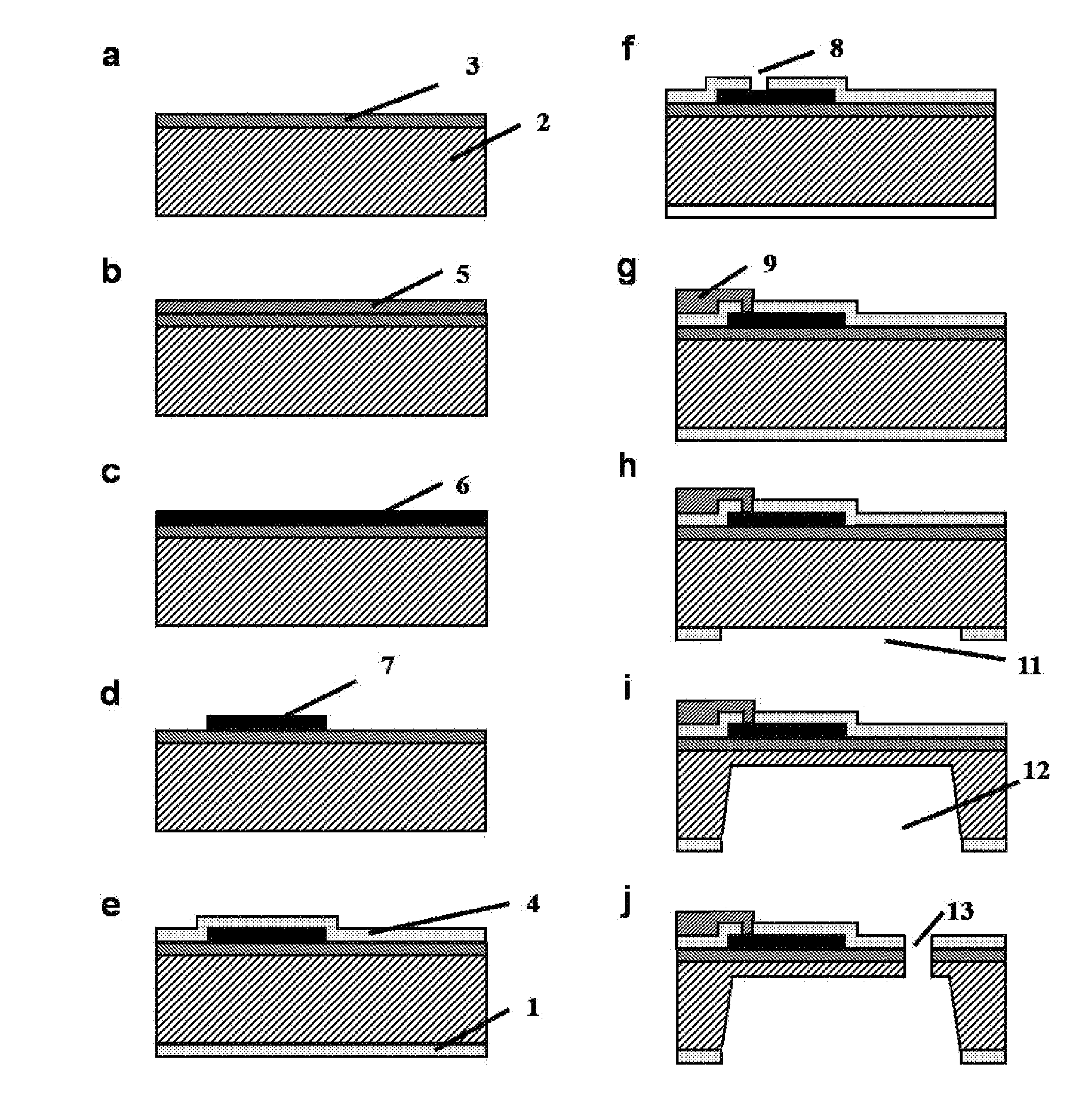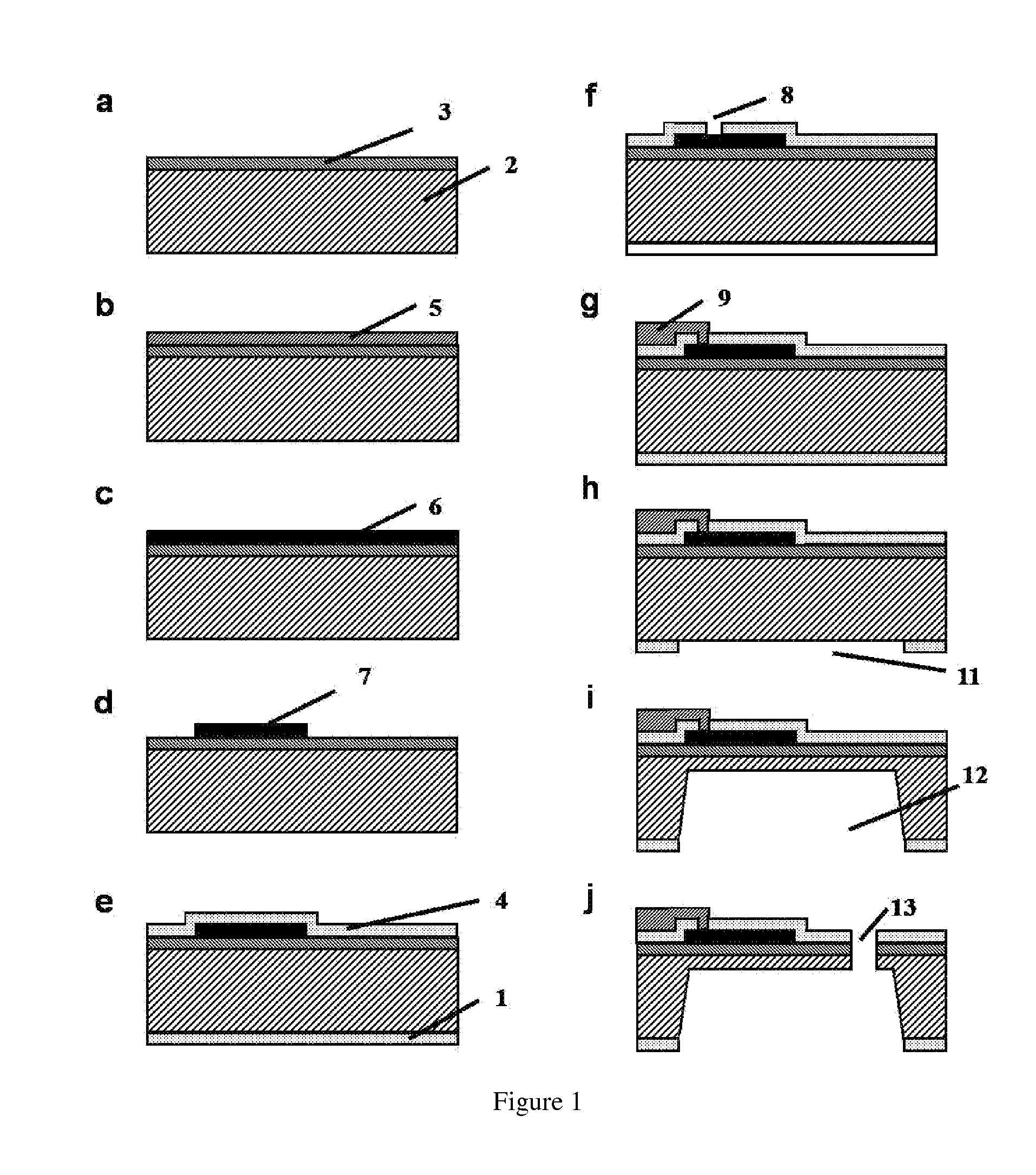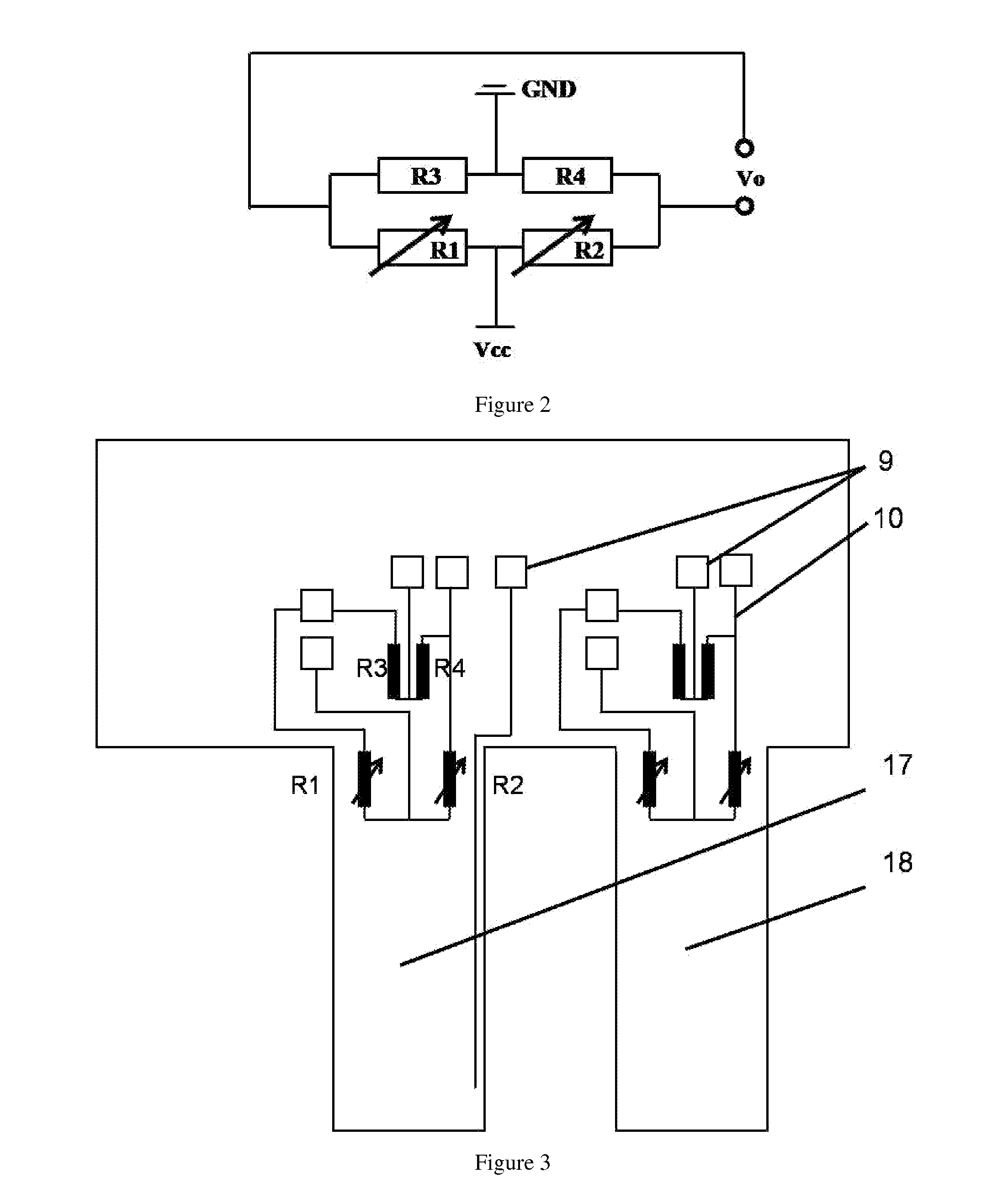Sensor for quantitative measurement of electromechanical properties and microstructure of nano-materials and method for making the same
- Summary
- Abstract
- Description
- Claims
- Application Information
AI Technical Summary
Benefits of technology
Problems solved by technology
Method used
Image
Examples
Embodiment Construction
The making and using of various embodiments of the present invention are discussed in detail below with accompanying drawings. It should be appreciated that the present invention provides many applicable inventive concepts that may be embodied in a wide various specific contexts. The sensor is used for quantitative measurement the electromechanical properties and microstructure of the low-dimensional materials.
The specific structure of the sensor is shown in FIG. 1-FIG. 6. The sensor for quantitative measurement the electromechanical properties and microstructure of the low-dimensional materials from the bottom up are as follows: a barrier layer (1), silicon substrate (2), epitaxial layer α (3), the epitaxial layer β (5) growth on the epitaxial layers α (3). After doping epitaxial layer β (5), the pressure-sensitive resistor layer (6) is formed. Eight pressure-sensitive resistors (7) are etched and formed on the pressure-sensitive resistor layer (6). There are two variable pressure-...
PUM
 Login to View More
Login to View More Abstract
Description
Claims
Application Information
 Login to View More
Login to View More - R&D
- Intellectual Property
- Life Sciences
- Materials
- Tech Scout
- Unparalleled Data Quality
- Higher Quality Content
- 60% Fewer Hallucinations
Browse by: Latest US Patents, China's latest patents, Technical Efficacy Thesaurus, Application Domain, Technology Topic, Popular Technical Reports.
© 2025 PatSnap. All rights reserved.Legal|Privacy policy|Modern Slavery Act Transparency Statement|Sitemap|About US| Contact US: help@patsnap.com



